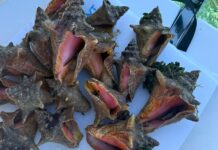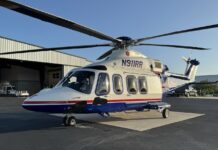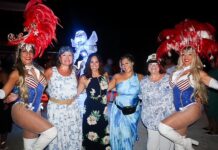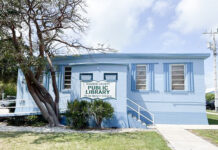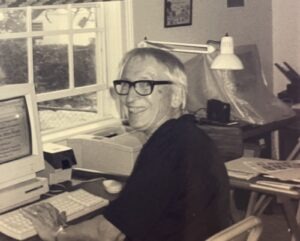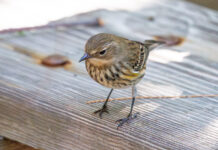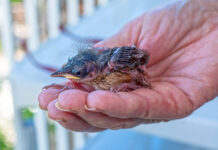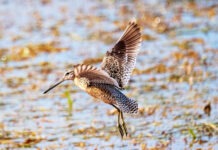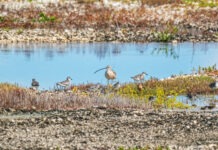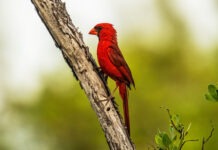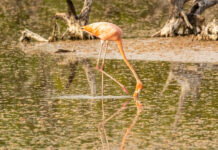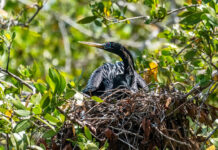I’m old school, at least as far as field guides to birds go. I prefer a book to an app, but it’s a qualified preference.
I generally find myself using field guides in two ways. The first is to look up specific information, or a fine point of identification, about a bird when I’ve already identified it, or at least when I’ve narrowed it down to two to six possibilities. The second is to cast about within a section of the book to figure out what I just saw when there are a lot of possibilities – say a rare hawk or songbird, like a warbler.
My first field guide was the “Peterson Field Guides to Birds” by Roger Tory Peterson, which was the mid-20th-century classic.
Wait, that’s not true. My first field guide was “The Audubon Society Field Guide To North American Birds: Eastern Region.” It was a photo-based field guide with a green vinyl cover, and it was awful. At least for me. I had it for years and it in no way elucidated the world of birds for me.
The fundamental function of a field guide is for you to look at the image of a bird on the page (or screen) and be able to match it with what you see in real life, and then know its name and ID. You’d think a book of photos would do that, but it didn’t. The guide had a very bureaucratic vibe; it was assembled to please a committee. For years that book convinced me I wasn’t smart enough or sharp enough for this whole birdwatching thing. I still have it around the house somewhere, and if I was doing due diligence I’d go pull it off a shelf and make a detailed complaint. But honestly I just get all muddled and depressed even thinking about that book.
The thing I can credit that book with is amplifying my grateful appreciation of “Peterson Field Guides to Birds” when I finally bought a copy. It was where I should have started. But there was no internet back in the day, and I didn’t know any birders.
The first edition of the Peterson came out in 1934. The initial run of 2,000 copies sold out in a week. The images were paintings and drawings, and it was the first field guide compact enough to slip into your back pocket. (I have a number of pre-Peterson books, and they are bricks, if not cinderblocks.) It also had this radically simple element of small arrows pointing to definitive field marks, the things that differentiated one species from another. It told you where to focus.
Peterson was the standard for decades. I bought the 1980 edition, which was the most recent one in the 1990s. I beat the hell out of that thing, wrote notes all over it, dropped it in puddles, and, if I recall correctly, ran over it with a car. By the end it was held together by duct tape and habit. But it still served its function. It gave me traction.
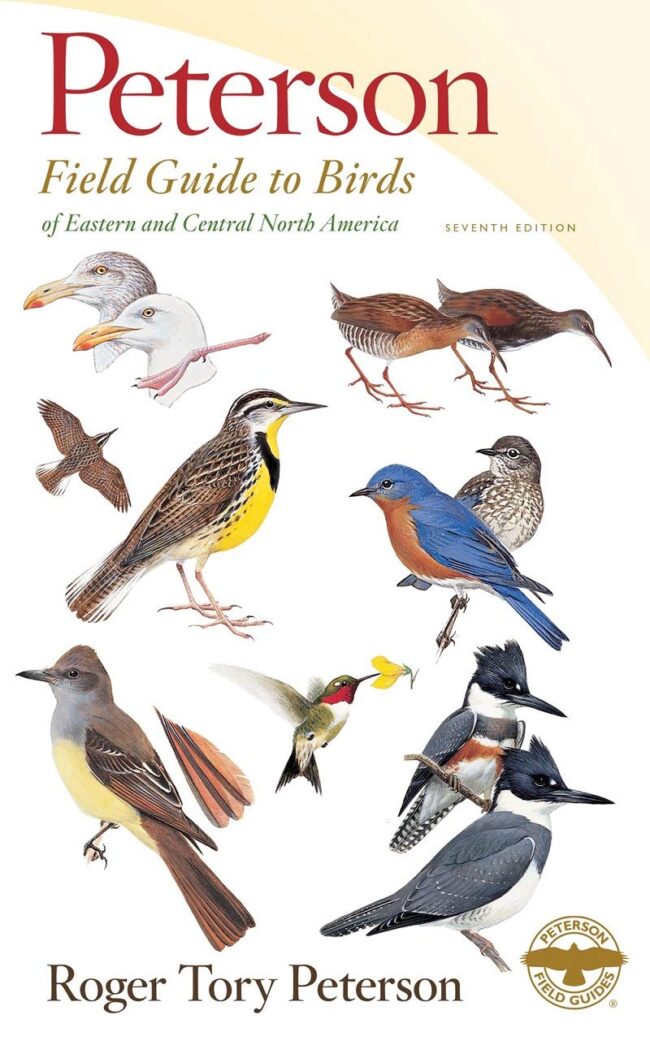


I dabbled around with a couple other newfangled field guides for a while, and while they were good, they didn’t get me any further than that Peterson did.
And then on the first day of the new millennium – Jan. 1, 2000 – “The Sibley Guide to Birds” by David Sibley came out. It wasn’t quite a brick, but at 544 pages, a little over 6 inches by 9 inches, and weighing two-and-a-half pounds, it was a lot to carry in the field. But it was so good people would carry them in backpacks, or by a special book cover with straps that you could sling over your shoulder. It was a relief when the pocket-sized east and west coast editions came out a few years later.
What was so great about the new Sibley guides was that he painted impressionistically, deprioritizing technical minutiae for what you could see, what your eye and brain could perceive. He just conveyed the sense of a bird so well.
Sibley is the Prince to Peterson’s Chuck Berry. He couldn’t have done what he did without the Peterson guide, but he definitely greatly expanded the genre.
What probably made Peterson’s and Sibley’s guides so good was the fact that they were each one man’s vision – the paintings, the text, the organization, as well as innovative ideas about how to show people what they needed to see.
I once was deposed in a court case about land use where the opposing attorney had gone on and on to me at the beginning of the session, possibly as a way to soften me up, about how great the Sibley guide was. But then he proceeded to basically dismiss anything I said because I didn’t have a biology degree. (I was an English major.) And for years I have been kicking myself for not having the wherewithal to respond that David Sibley never even went to college.
Peterson didn’t either, though he did go to art school for a while.
But honestly, these days I don’t really carry books by either Peterson or Sibley with me when I go out birding. I use their apps.
There are pros and cons to this. The pros are that you don’t have to carry a heavy field guide with you. And the apps work pretty well if you’re trying to figure out a bird’s range or leg color or the shape of their tail. In the Sibley app you can even compare two different species, which is helpful. Also, all the apps have sound, so you can compare what you’re hearing with what a species is supposed to sound like.
The cons are that, if you see a bird that stumps you, it is much easier and quicker to flip through a printed field guide than an app. Also, books are easier to read in bright sunlight, won’t bankrupt you if they get wet or dropped into a puddle, and there are no batteries to die.
Also, you can learn a lot about birds by just flipping through a field guide and exploring.
When the first apps came out I ended up writing a review of five or six of them for a national birdwatching magazine. The Sibley and Peterson apps were the only two apps I really liked, and I’ve had them both on my phone for over a decade.
A second edition of the Sibley just came out. Most apps cost a dollar or two. The Sibley Birds 2nd Edition goes for $19.99 on the Apple Store. I’m thinking I might splurge and upgrade.


